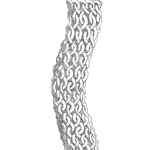
“How many samples do we need?” is a very common question. It is one you will receive when planning nearly any kind of reliability testing. It is a great question.
Having too few samples means the results are likely not useful to make a decision. Too many samples improve the results, yet does add unnecessary costs. Getting the right sample size is an exercise starting in statistics and ending with a balance of constraints.
There are six elements to consider when estimating sample size. We will use the success testing formula, a life test with no planned failures, to outline the necessary considerations. [Read more…]













